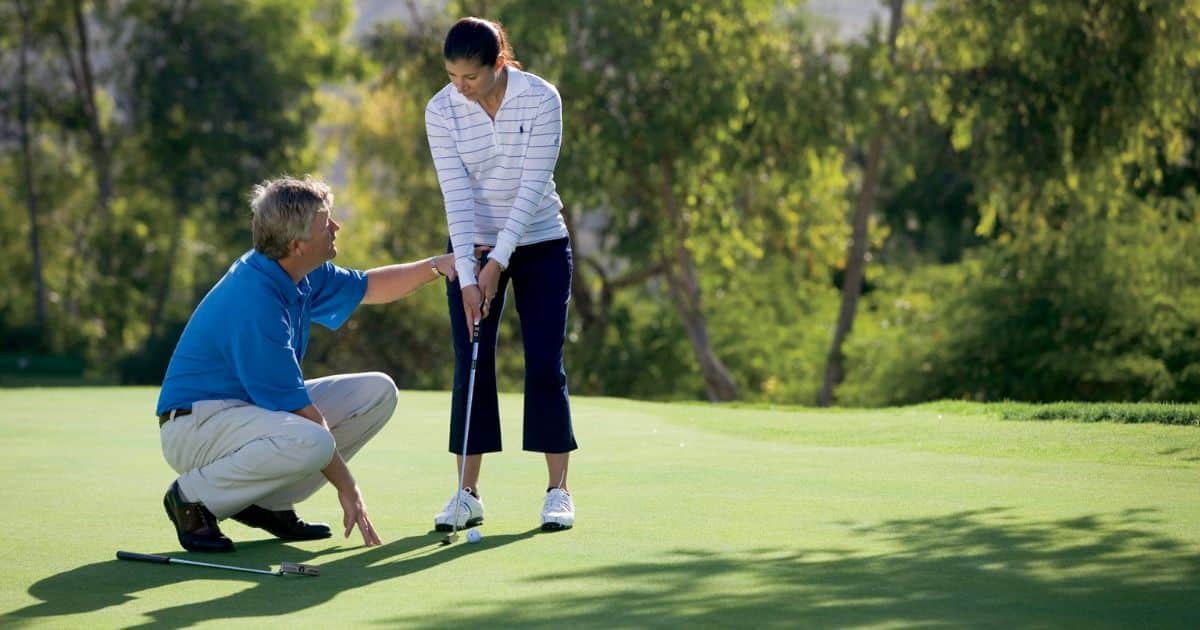Want to fix the technical glitches holding up your low scores? Golf Swing Analysis captures video to track your driving, chipping, and motions frame by frame.
A skilled swing coach can gain insight into your alignment, balance, club path, swing plane and more from high-speed recordings. Comparing your swing to professional models reveals weaknesses such as early hip flexion, a flat left wrist, or an excessively quick backswing that contributes to missed targets. Custom drills improve mechanics to help maximize power, accuracy and consistency on the course. In this article “Golf Swing Analysis” We will discuss this further.
Understanding Your Unique Swing Dynamics
Analysis of natural swing mechanics like tempo, rhythm, and motion patterns provides invaluable insight into playing to your strengths and making minor adjustments for consistency. By assessing the innate movements that feel most coordinated, a coach can advise impactful tweaks within your symmetrical style rather than overhauling what comes naturally.
Assessing Your Natural Rhythm and Tempo
Analyzing swing speed gives clues to proper tempo within your unique rhythmic patterns. Is your tempo even throughout motions or rushed at points? Maintaining a fluid, well-balanced pace between backswing and downswing enhances timing.
Identifying Strengths and Weaknesses
Video reveals underlying strong suits like hip rotation, flexible wrists or balanced finish that provide building blocks. Targeted drills then shore up technical flaws minimizing power or placement like an early weight shift.
Mastering Proper Posture and Alignment
Establishing an athletic setup near the ball is pivotal for all subsequent movements. Proper spine angle, weight distribution and relationship to target lines form the launch pad for square impact. A consistent frame of reference unlocks reproducibility.
Establishing an Athletic Setup
With slight bend at the knees and hips, the shoulders should stay relaxed over the balls of the feet forming a balanced stance. This ready position permits maximal reach while maintaining control and stability.
Alignment Tools for Consistent Ball Striking
Using alignment rods or a line parallel to the intended target assists hitting down the intended path. Toes, arms and shoulders align together through set up to square clubface at strike. Consistent setup promotes repeatable ball striking.
Analyzing Your Swing Path and Plane
Swing trajectory greatly impacts shot shape and accuracy. Video analysis identifies if the club travels too far inside or outside on the downswing. A balanced path descending from the inside with gradual outward release best promotes straight flight. Adjustments address flaws throwing off the ideal impact position.
Achieving an In-To-Out Swing Path
Slightly inside-to-outside movement through the hitting area produces draws, while outside-in leads to slices. Maintaining a centered, balanced path allows shaping shots right or left by small alterations at impact rather than wholesale mechanical changes.
Maintaining Optimal Swing Plane
Matching plane to intended shot and ability prevents hitting behind the ball and under it from too flat a position or over it from too upright. Feedback helps maintain the arcing swing on the desired plane to the desired target.
Dissecting the Golf Club Attack Angle
How the shaft is positioned at address versus impact gives clues to ideal consistent contact. Slightly descending or shallow angles through impact square the club and launch high balls for distance. An aggressive descending blow risks thin shots while too flat a position results in fat shots or lack of power.
Creating Steep Angles of Approach
Ensuring attack angles present well-positioned shafts and descending blow upon meeting the ball from inside due to an arcing swing motion rather than steeply from outside shows proper impact.
Square Face at Impact
Optimal attack angles through impact square face and clubhead for maximum power and consistency. Steep outside angles and too flat inside impacts lead to slicers or hooks respectively from an open or closed face at impact.
Assessing Your Hip and Shoulder Turn
How the core and surrounding muscles operate is critical to sequencing power. Analysis spots if one area outpaces others in the backswing or downswing. Consistent coiling of hips and shoulders enables proper torque and weight shift onto the lead side for whole body lash through impact.
Coiling the Lower Body Effectively
Proper backswing sees hips and shoulders rotate as a unit back and through while weight remains centered over the arches. This readiesstored potential energy release downswing and through the ball.
Clearing the Hips Through Impact
The downswing initiates with lower body working in synch with spine tilt and shoulder turn to deliver power from ground up and maximise clubhead speed through the hitting zone as hips clear on the finish maintaining balance.
Identifying Potential Faults in the Backswing
Video decoding scrutinises takeaway and top positions for flaws throwing off the downswing like early weight shifts onto the back foot. Assessment finds common tendencies such as an overly flat back or bent lead arm restricting power or inconsistent hand position weakening shots.
Utilizing one-piece Takeaway
Maintaining connection between upper and lower body with shoulder turn moving hips in tandem encourages a stable spine angle and consistent grip pressure avoiding flipping or standing up during the swing.
Avoiding Common Backswing Leaks
Analysis reveals patterns costing yards like casting or overly extension breaking the lead arm from the shoulder socket rather than hinging from it or twisting externally around the spine instead of coiling hips and shoulders together efficiently storing power.
Analyzing the Downswing and Impact Zone
Frame-by-frame reviews identify breakdowns in the downswing sequence preventing clean striking such as early extension from the hips stalling the lower body or collapse of the lead wrist at impact. Adjustments restore optimal force delivery through the ball.
Sequencing the Downswing Properly
Hip rotation should lead the downswing in conjunction with shoulder turn and weight transfer to the inside of the front foot. This chains lower and upper body motions maximizing clubhead velocity through the hit.
Squaring Clubface Through Impact
Proper downswing plane and attack angle interact squaring the clubface to promote straight accuracy by squashing hand position and shaft lean changes through impact. Adjustments maintain square face to club path relationship.
Evaluating Your Chipping and Putting Stroke
Short-game skills near the green impact scoring even more than the full swing. Analysis identifies flaws like an inconsistent grip, stance width, spine angle, head positioning or speed control preventing consistent contact around the green.
Maintaining Rhythm Around the Greens
Smooth tempo and balance are pivotal for finesse shots requiring feel over power. Evaluation gauges maintaining consistent stroke mechanics of grip, posture and release to target the desired distance with soft hands.
Reading Green Speeds Effectively
Putting demands pre-shot routines and recognition of slope, grain and speed to gauge pace. Assessment enhances understanding green inconsistencies to better predict breaking putts with the proper speed and line for makes.
Video Analysis and Drills for Improvement
Comparing movements frame-by-frame to PGA swing models pinpoints areas for development. Custom practice routines target weaknesses like impact position drills, half-swing feels for tempo, stance adjustments, or chipping techniques improving skills. Regular evaluation tracks progression.
Comparing Your Movements to PGA Models
Studying athletic positions and sequences of top golfers provides a blueprint highlighting individual technical faults. This focuses corrective practice and adjustments to emulate tour-level mechanics minimizing dispersion.
Individual Drills to Refine Key Movements
Drills isolate areas for refinement like hip rotation, ball striking pockets or weight transfer. Practicing feel and grooving muscle memory of proper technique trains the body and mind connecting mental performance to physical swing changes lowering scores.
FAQ’s
What is swing analysis in golf?
Swing analysis in golf involves the assessment and evaluation of a golfer’s swing mechanics using technology to improve performance and correct faults.
What is the concept of the golf swing?
The golf swing concept refers to the coordinated motion of a golfer’s body and club, aiming to strike the ball effectively and achieve distance and accuracy.
Why is Rory McIlroy’s swing so good?
Rory McIlroy’s exceptional swing is attributed to his powerful yet fluid motion, well-timed sequencing, and consistent mechanics, contributing to his success on the golf course.
How do you read golf swing data?
Reading golf swing data involves interpreting metrics like club speed, ball speed, launch angle, and spin rate, often provided by technology such as launch monitors, to understand and enhance a golfer’s performance.
What is an acceptable swing path?
An acceptable swing path in golf is one that promotes straight shots, with the club traveling on a path aligned with the target line, minimizing slices or hooks.
Conclusion
In conclusion, comprehensive video analysis of a golfer’s full swing mechanics and short game strokes provides invaluable insight from an expert coach. Frame-by-frame evaluation systematically identifies technical strengths to leverage as well as weaknesses limiting consistency and distance. Customized swing adjustments and targeted practice routines then work to refine motor patterns and ingrain optimal positions neurologically. Regular review tracks progress attained toward playing to one’s full potential. Most importantly, comprehensive biomechanical analysis empowers golfers to efficiently maximize natural ability through minor tweaks versus major reconstruction. Committing to objective evaluation and data-backed change yields the biggest scoring rewards. Learn more information “American Football The Best Sport“









